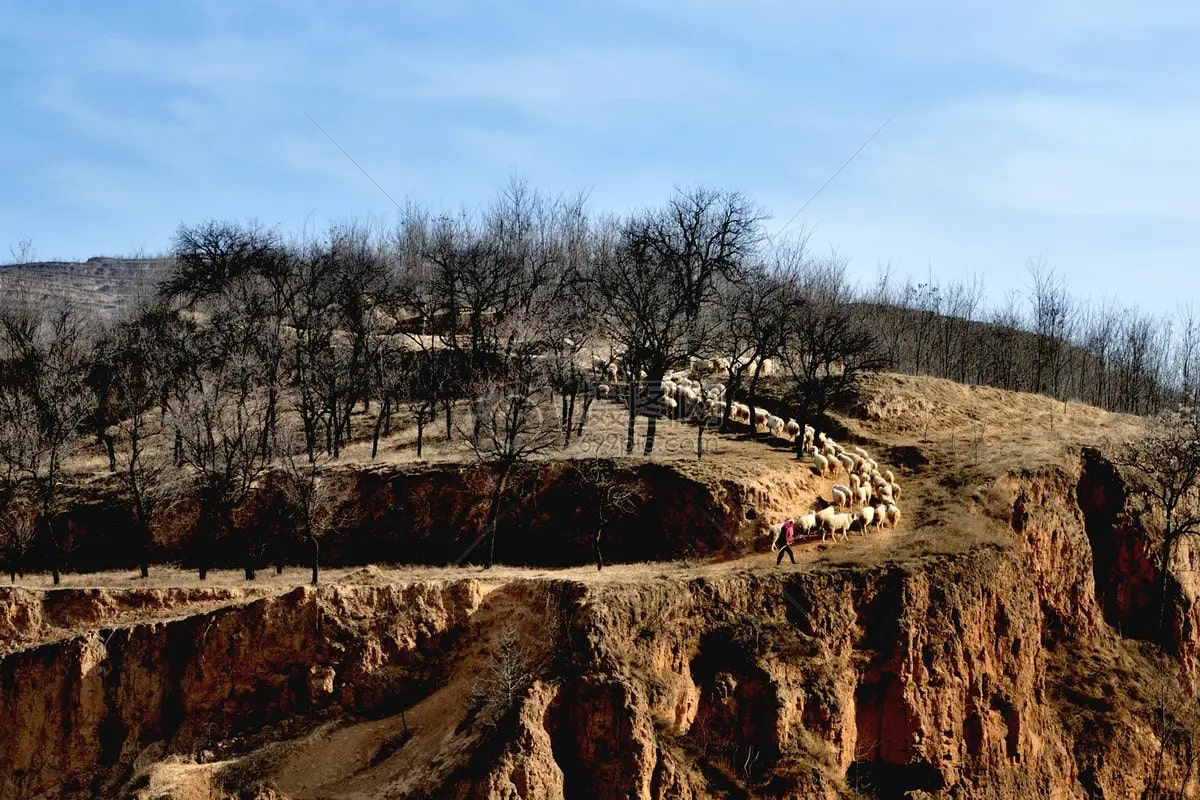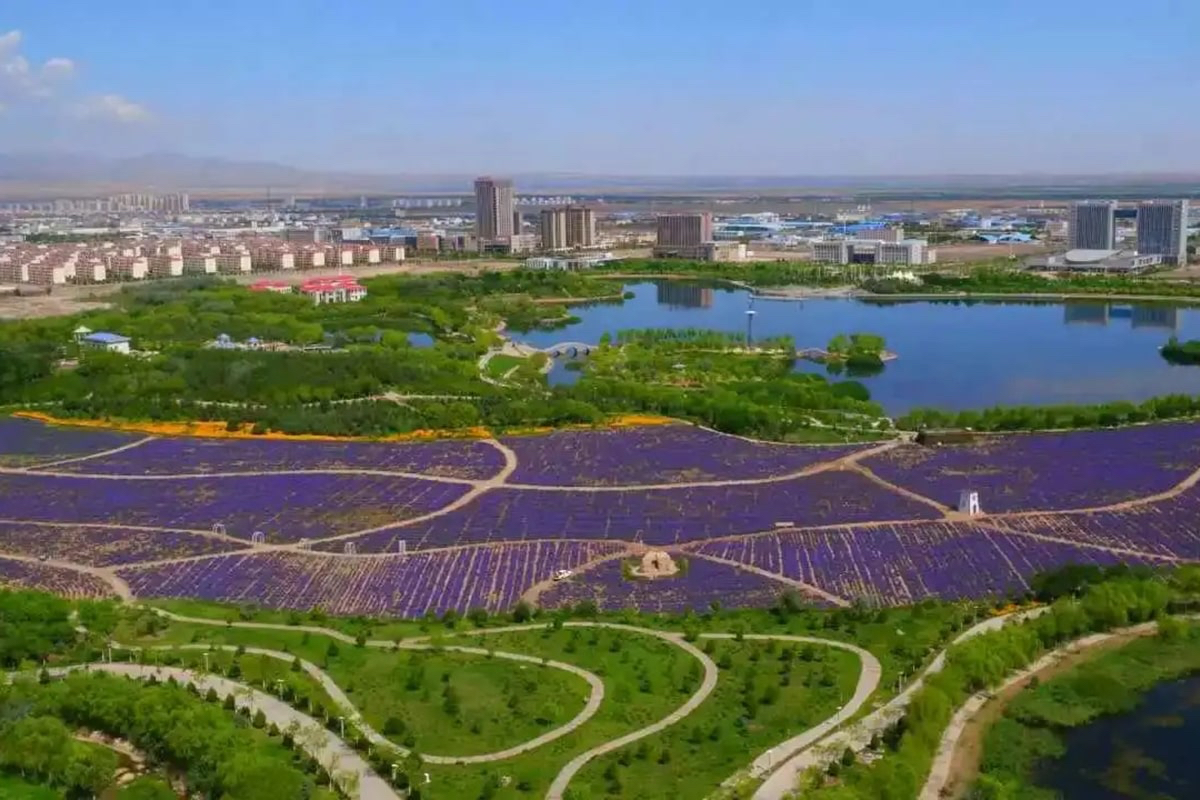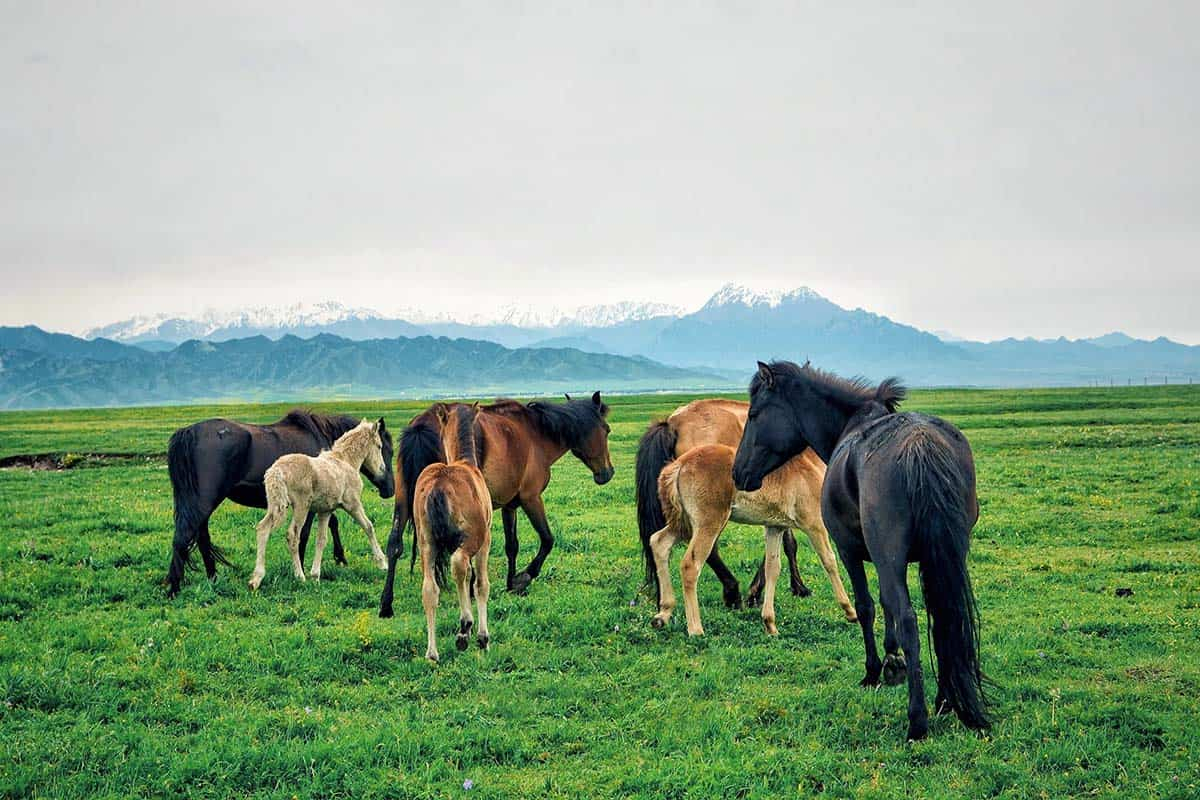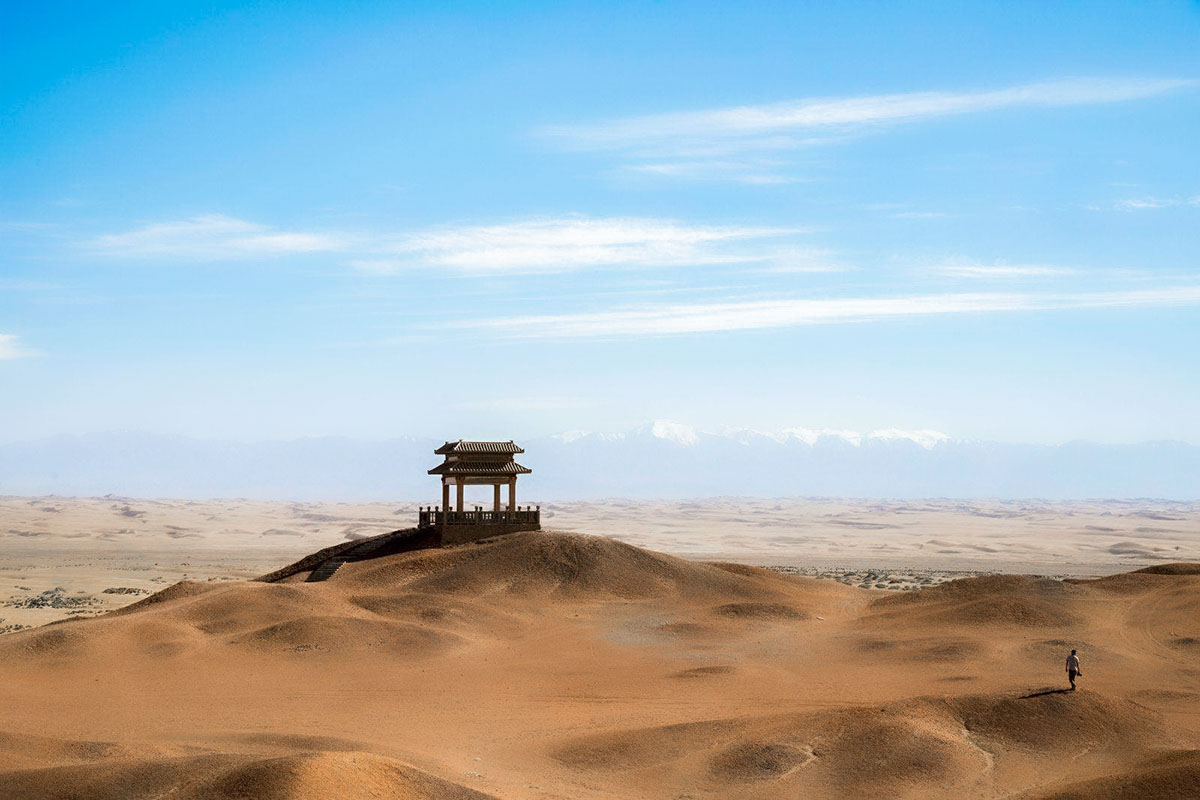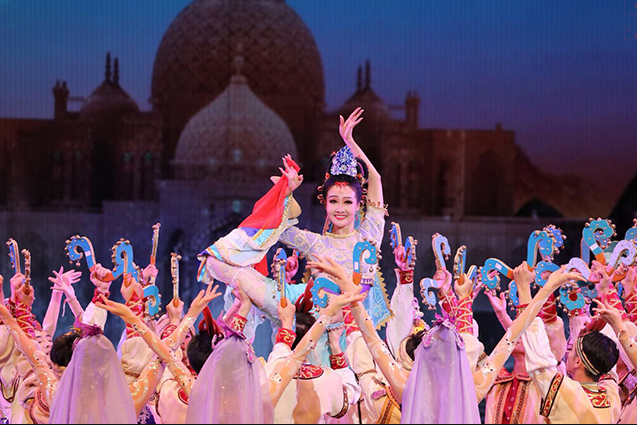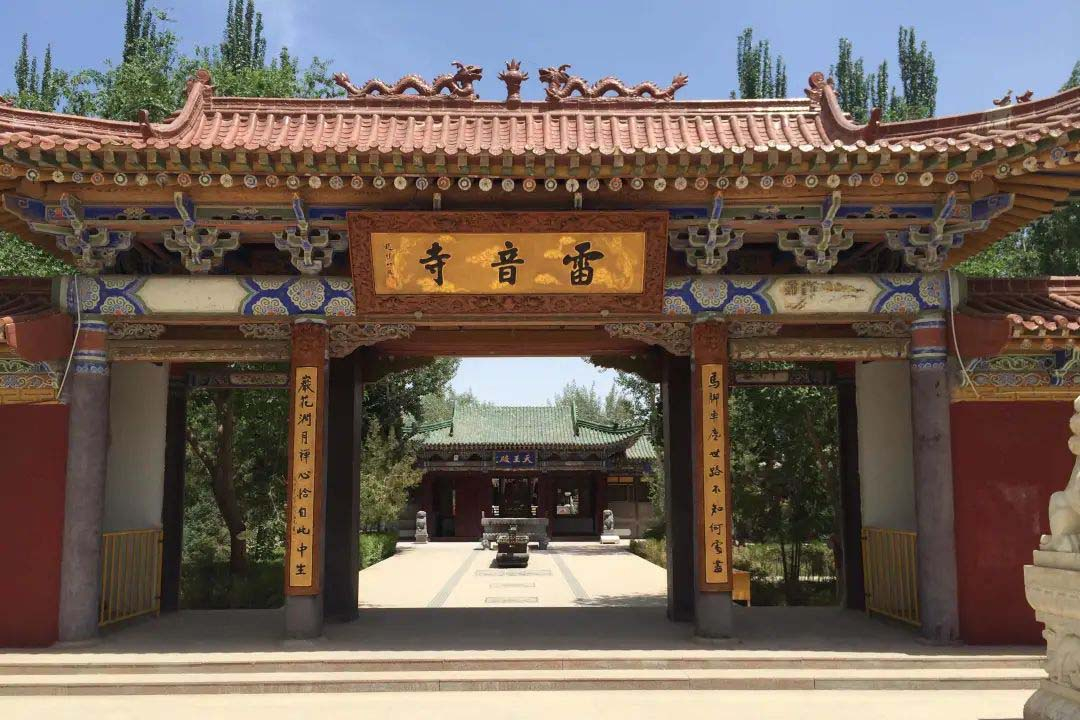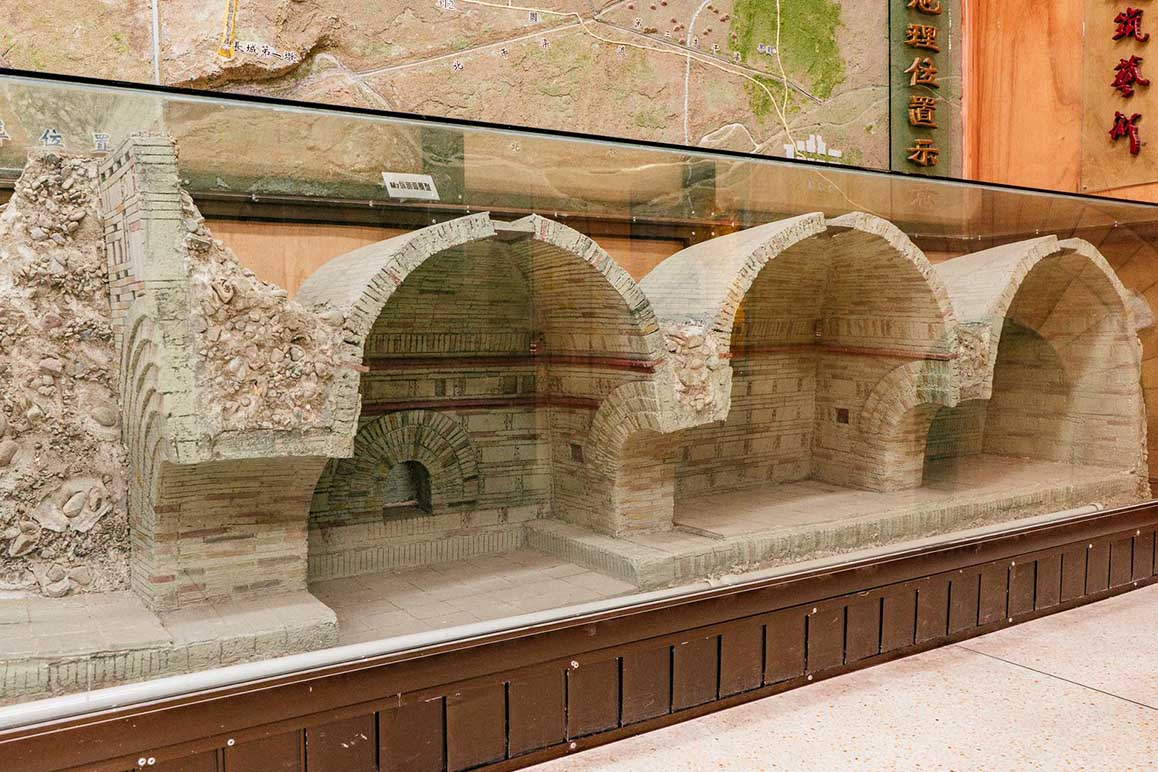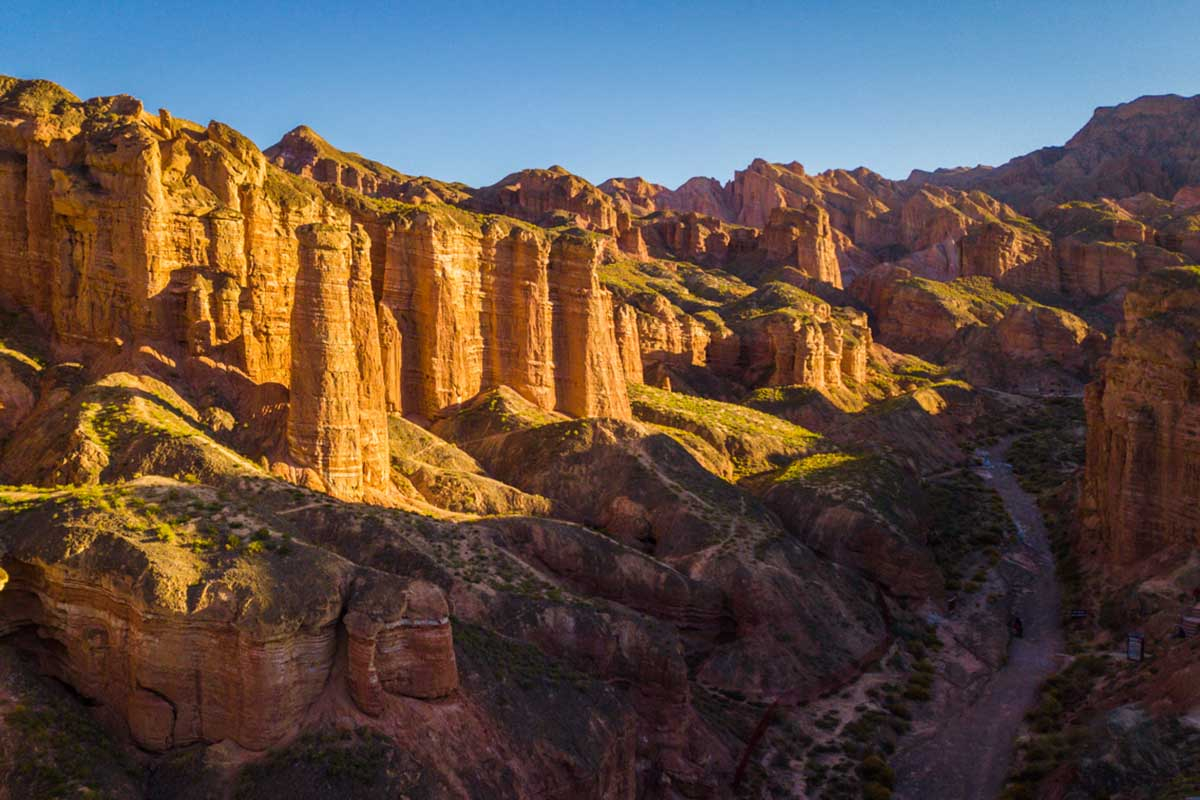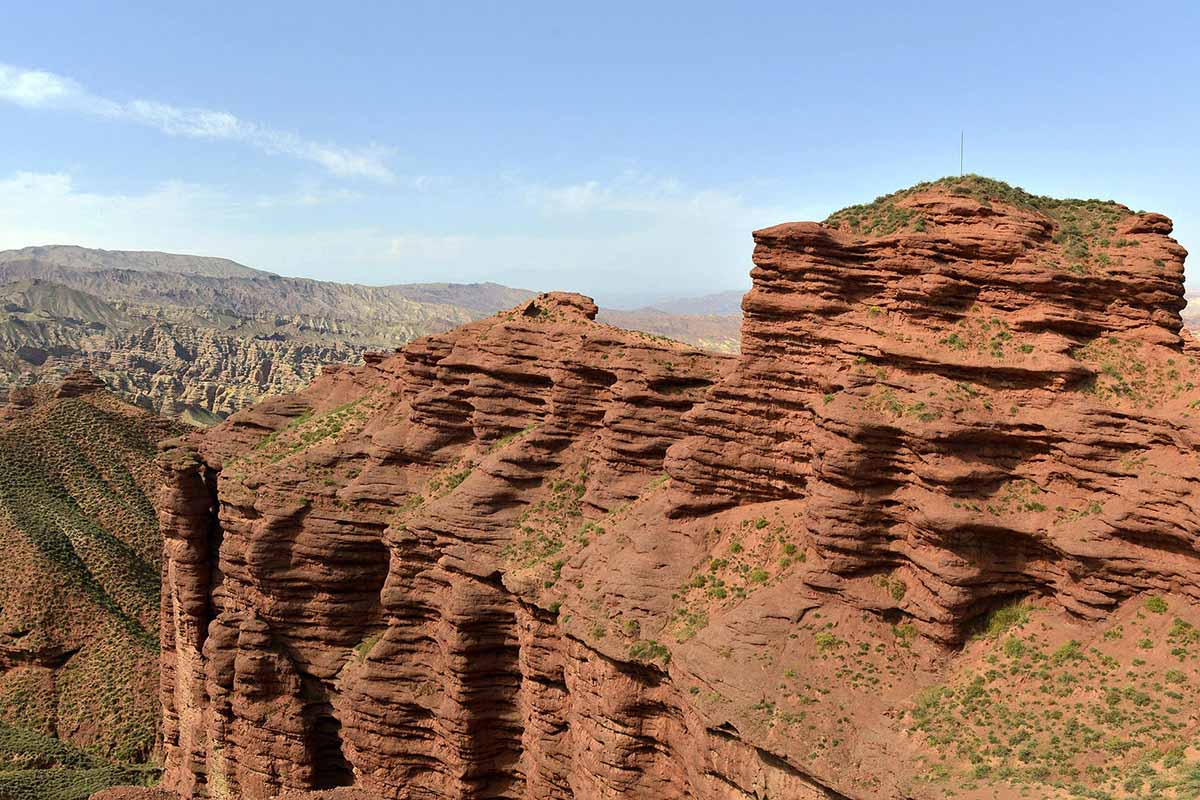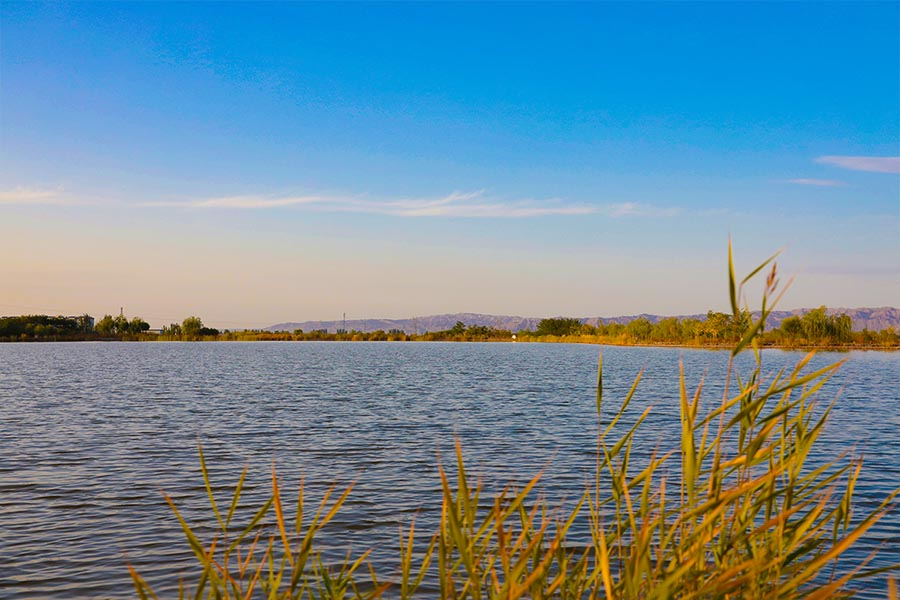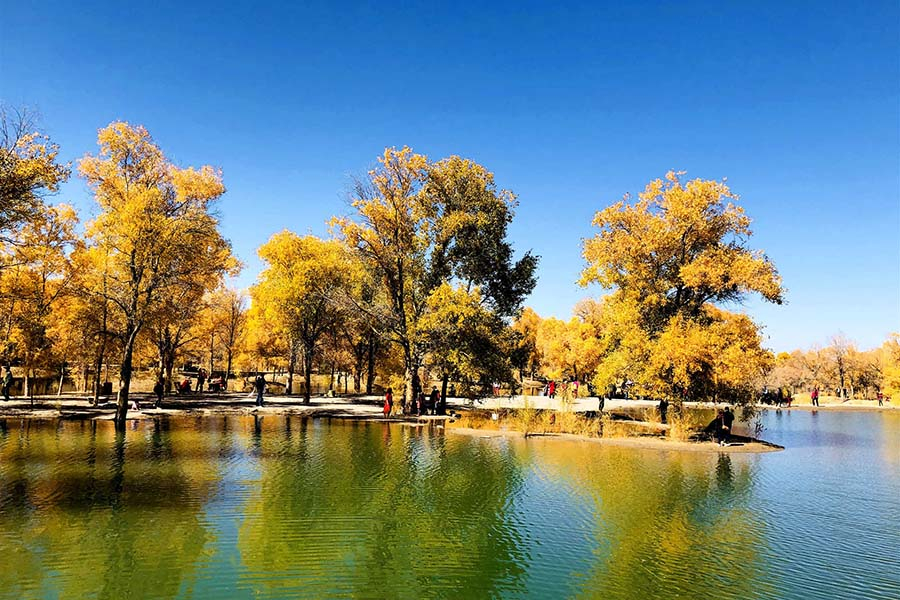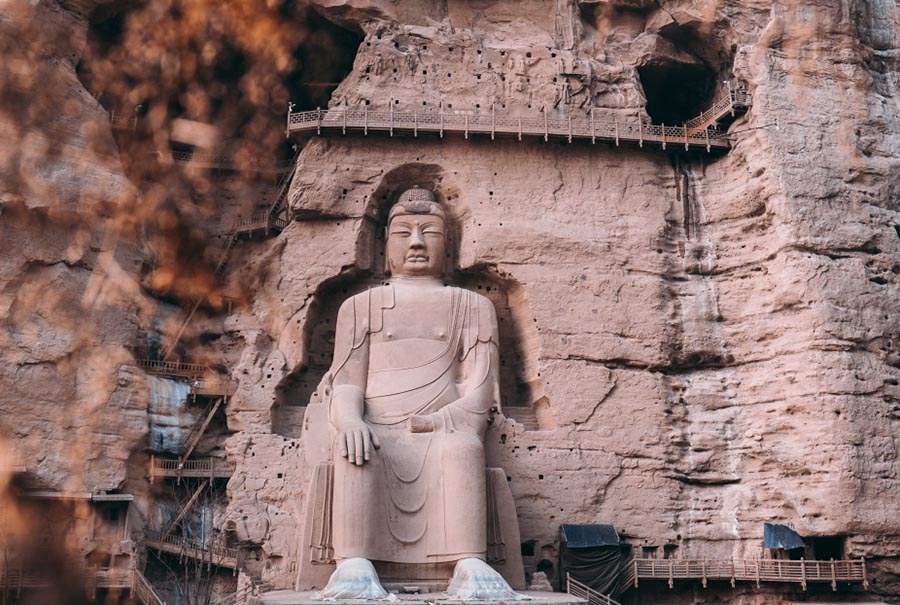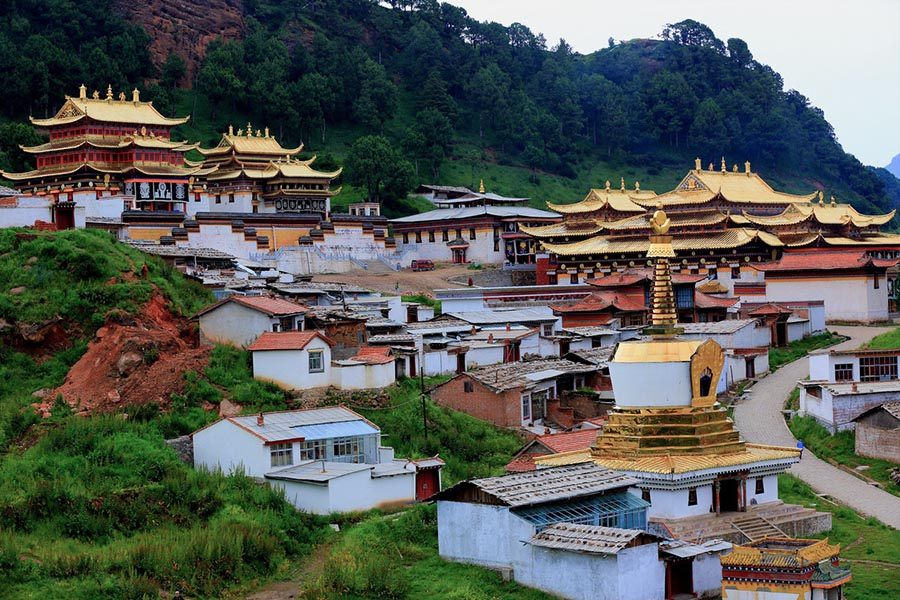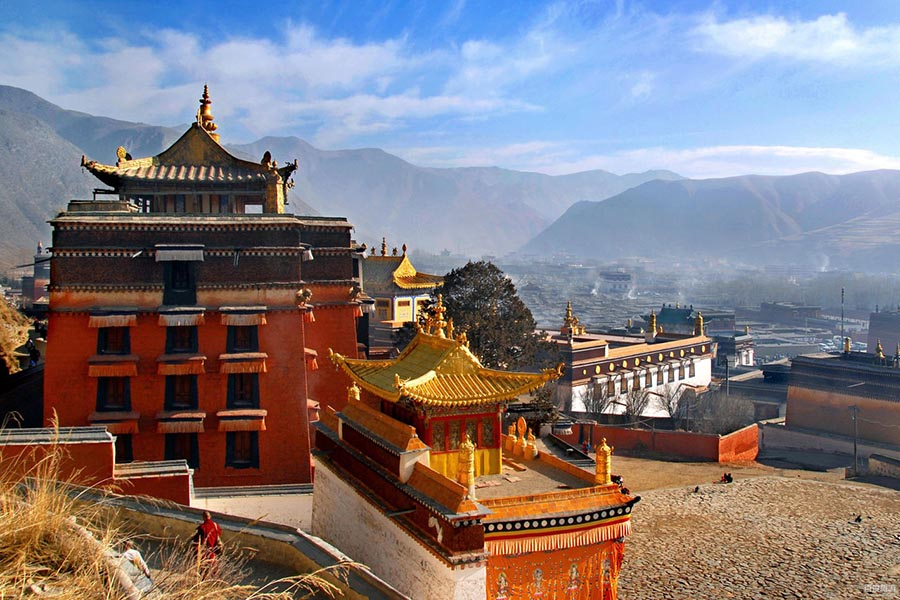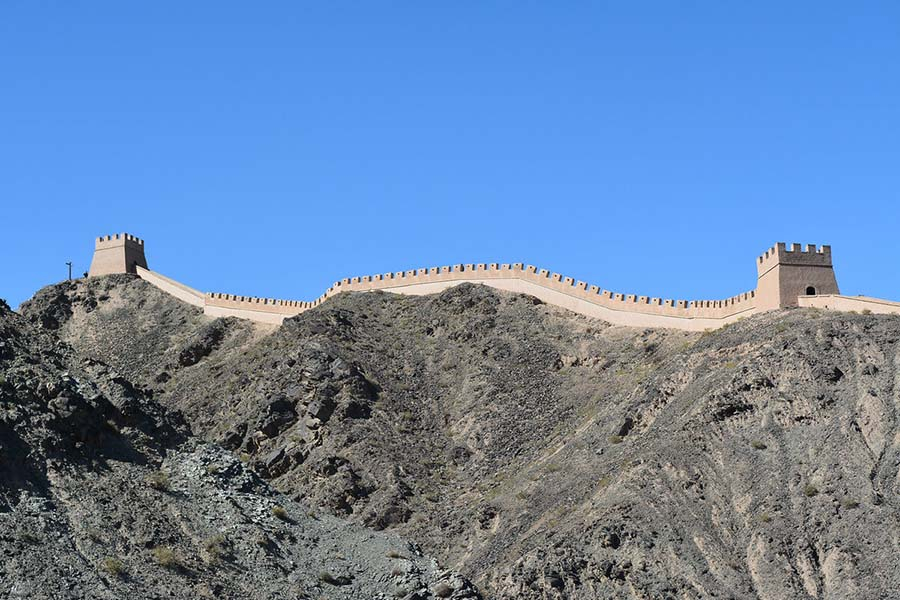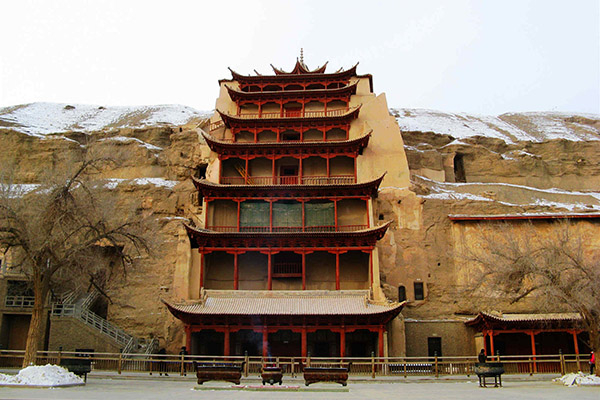Zhagana Village
Chinese name: 扎尕那(Zha Ga Na)
Location: Yiwa, Diebu county, Gannan Prefecture, Gansu Province.
Ticket: Free
Estimated tour time:2-3 hours
Recommended time to visit: Jun to Aug
Nearby attractions: Langmu Si, Ruoergai Grassland, Labrang Monastery, Flower lake, etc.
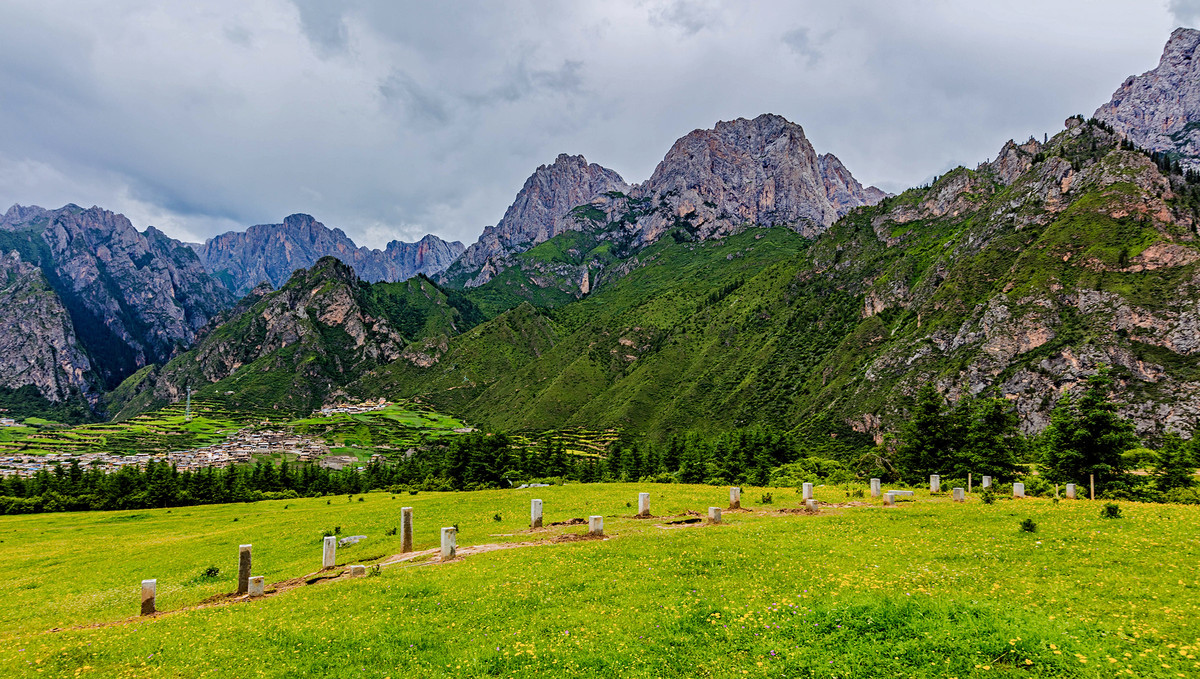
A Tibetan village in the Zhagana region in Diebu County of Gannan Tibetan Autonomous Prefecture in northwest China's Gansu Province. Zhagana is a mountainous region on the northeastern rim of the Tibetan Plateau, with an average altitude of 3,500 meters. Zhagana Mountain means “stone casket” in Tibetan language and is elected as forth of the "ten non-famous peaks" by National geographic in 2009. Located in the Yiwa village, 34 kilometers to the northwest of Diebu County, it is a natural masterpiece and also a complete natural “Stone City” covered by graceful and unique sceneries, with the landform looks like a grand palace. The region has a unique cultural and natural landscape featuring Tibetan-style villages, primitive forests and mountains formed during the Quaternary glaciation.
A great explorer, Joseph Locke, firstly found Zhagana and introduce it to the world. He described Zhagana like this “It is so marvelous, I will feel a kind of guilt if I don’t take pictures of this wonderful place." "I’ve never seen such a beautiful landscape before. If the author of The Genesis sees the beautiful sceneries of Diebu, he will create Adam and Eve here undoubtedly. Diebu really impresses me, the wide forests is just like a botany museum, absolutely a virgin area. It will become a resort for the lovers of the nature."
Although this land of idyllic beauty was been highly spoken by National geographic, it is still a virgin land until now.
The different ogenesises hunch the mountains of unique temperament. Zhagana is legendarily regarded as the home of the mountain spirit and the altar of mountain ghost, while in reality it is the homeland of hundreds of Tibetan dwellers.
The rocky mountain fortress has historically segregated this precious place, but it also bestows pride to the community within, as it continually communicates what they have is special and ought to be protected. Something deeply mystical and almost magical glitters on the surface of this hidden land. To pay homage to the beauty of this natural setting, the residents burn incense. They believe in and practice a harmonious existence between mankind and nature.
The residents here are mostly Tibetans who lead lives of half farming and half nomadism. Here you can see native people’s lifestyle and feel the simplicity and quietness of the primitive Tibetan village.
There are high mountains and deep valleys, all shrouded in clouds and mists, just like a fairyland. Farmlands, villages and temples provide a striking contrast with the primeval forests and the quaternary glacial landform relics.Various lines of work such as nomadism, farming, hunting and woodcutting match up and complement each other, making Zhagana a role model of harmonious co-existence between human and nature.
In the north of the stone city, there is the Die mountain surrounded by luxuriantly green pines and verdant cypresses of other small mountains, enclosing four villages and one temple in it, the la-sang temple, It's the high point of zhagana, built in 1645, la-sang temple has a history of more than 300 years.
There are two viewing deck in Zhagana. One is Yeri viewing deck which at low altitude and is simple. Another one is the one opposite to Fairy beach, Dayi Viewing deck. These two places are great spots for panoramic view of zhagana and sunrise and morning mist.
- HOTEST
- RECOMMEND
